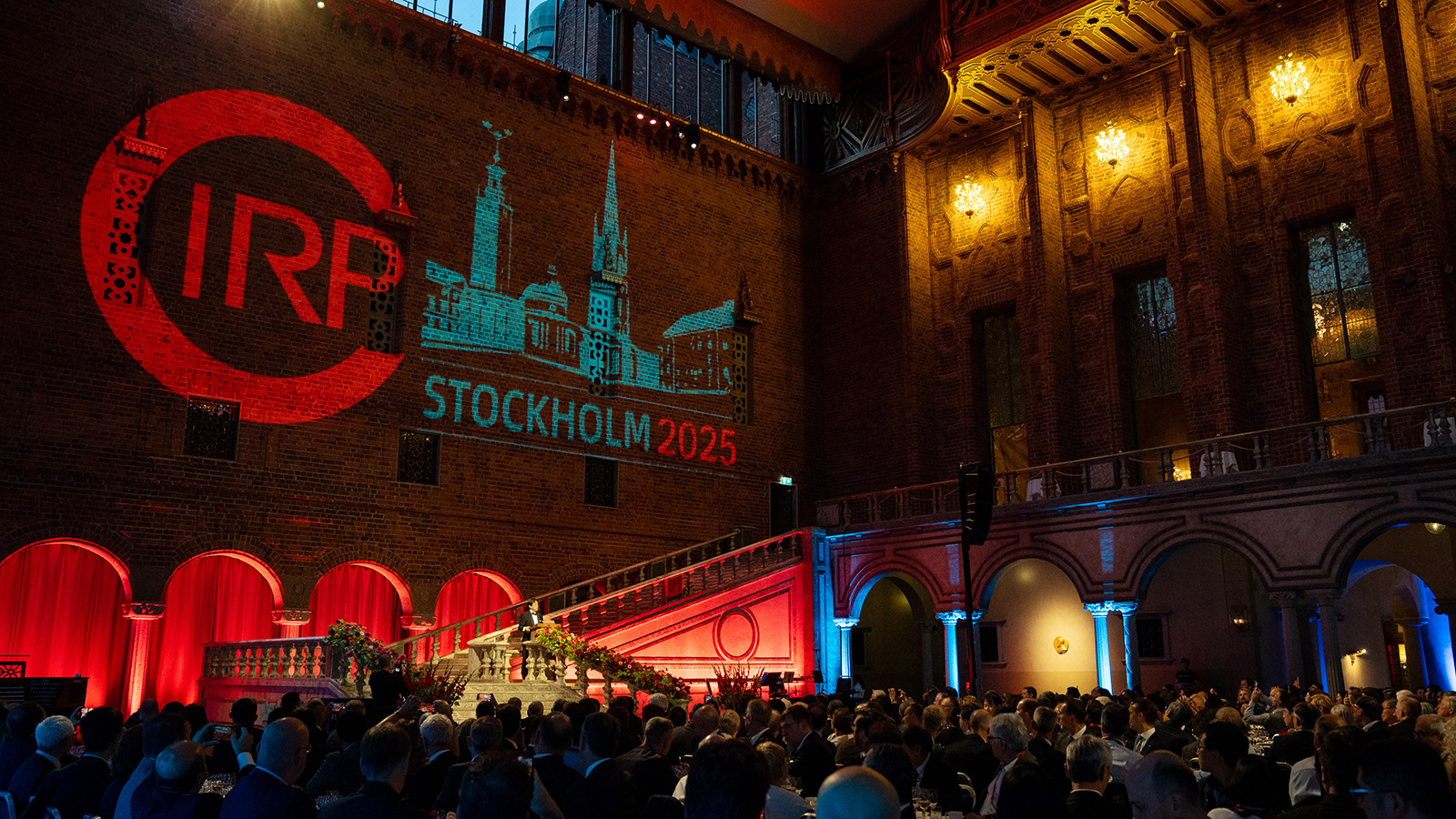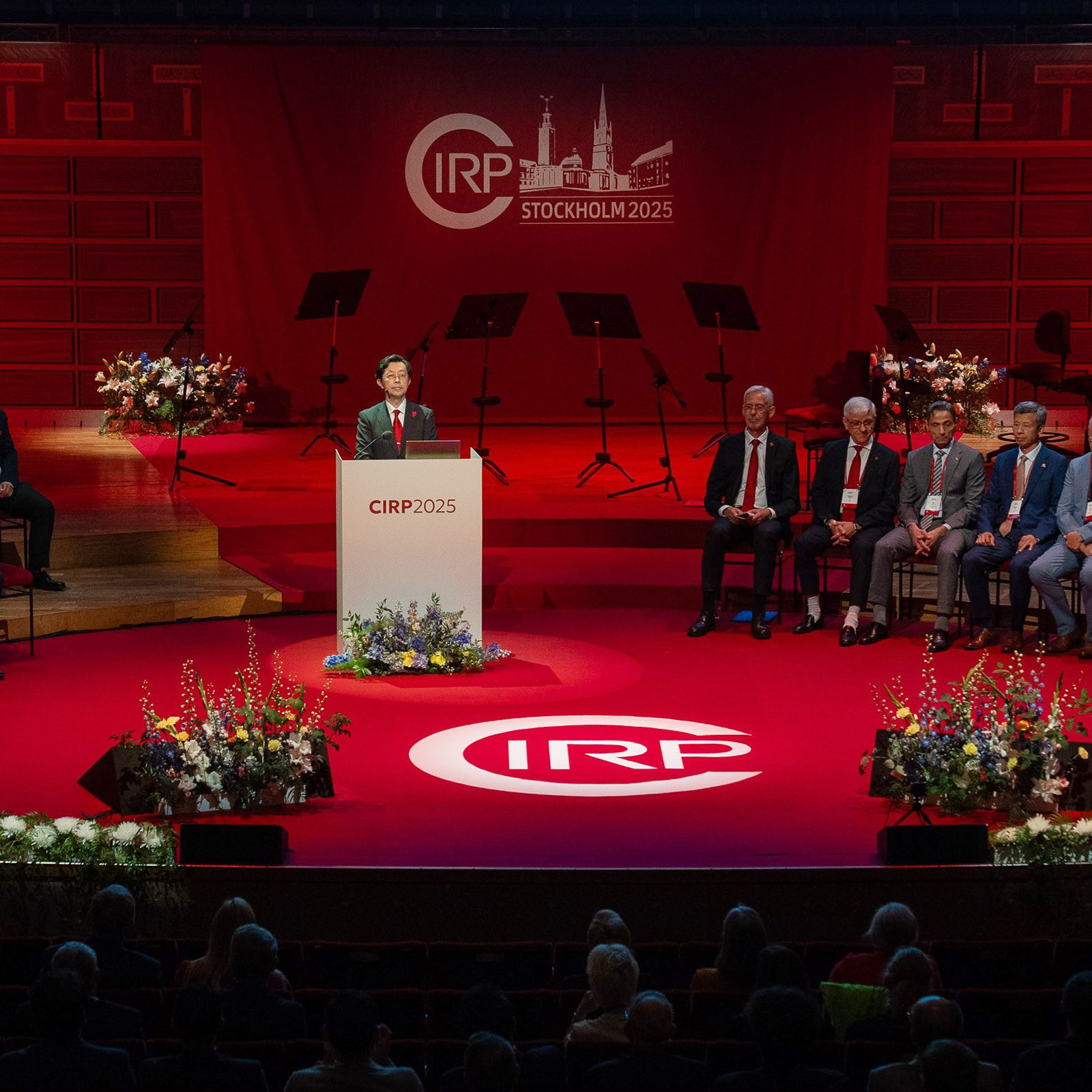CIRP 2025: Stockholm hosted global production engineering community

About 700 of the world’s brightest minds in production engineering gathered in Stockholm at the end of August for the 74th CIRP General Assembly, hosted by KTH and the Centre of Excellence in Production Research (XPRES).
“The General Assembly is like a big family reunion, a close community that travels all over the world to meet at the annual assembly, with a couple of new family members added each year,” says Professor Lihui Wang, Director of XPRES and Chair of Sustainable Manufacturing at KTH.
This year, the week-long event had an unusually high turnout, with 758 participants from 39 countries gathering in Stockholm to discuss the challenges and future of production engineering and strengthen connections between industry and academia.
Changing the image
At the Opening Ceremony, the CIRP president spoke about the importance of diversity, while production engineering still struggles, to some extent, to attract more women to research and basic educational programmes.
“Sadly, there is a misconception of production engineering being boring, and performed in rough factory environments. The General Assembly is an opportunity to show that it can be fascinating,” says Lihui Wang.
Several research themes at CIRP 2025 highlight the shift to smart, sustainable production engineering: circularity, life cycle engineering, e-mobility, and human-centricity – often called Industry 5.0. This approach involves using technology to enhance human capabilities, safety, precision, and effectiveness, while keeping the human operator at the centre of production.
Human-centricity
“At this point human centricity is one of the areas we need to pay extra attention to, especially in AI and robots,” says Lihui Wang. “Excluding the human operator from production environments affects human dignity and creativity, and in a dystopian future scenario, an AI might even consider us unnecessary or harmful.”
Lihui Wang explains that putting the human at the centre can take many forms:
“It can be about enhancing human strength or capabilities, for instance with exoskeletons. It can also mean combining human and artificial intelligence, such as in augmented or mixed reality applications, or through digital modelling.”
“Some of the most advanced research is being done on controlling industrial robots with neural decoders – that is, with brainwaves. This is still at an early stage, but is beginning to show results,” says Lihui Wang.
Policy implications
On whether CIRP can influence actual policy, such as new safety standards, Lihui Wang says that CIRP is a body focused on scientific research. But he adds that many of its members also hold advisory roles in industry and policy circles:
“In the long run the members’ various engagements can affect standardisation, ethics, policy, and regulations,” he says.
Passing the flag on
After five years, starting with the 2020 vote to hold CIRP 2025 in Stockholm, the project has now concluded.
“We handed over the CIRP flag to Italy, so next year we will meet in Turin. We’re happy that the event was well attended and highly rated, and that people really enjoyed their time here,” says Lihui Wang.
What do you think contributed to a successful event?
“We set out to create a memorable assembly with an ambitious social programme. But above all, it was the teamwork. This has been a collective effort, with strong support from KTH and XPRES, and contributions from everyone involved – the national and local organising committees, and all volunteers, both students and KTH staff. It would not have been possible without their help.”
Facts
- CIRP (The International Academy for Production Engineering), founded in 1951, promotes international collaboration for research and development in the field of production engineering. CIRP has several Scientific & Technical Committees (STCs) focusing on different areas within Production Engineering.
- The CIRP General Assembly is arranged annually by CIRP and a host country. It was previously held in Stockholm in 1957 and 1972.
- CIRP 2025 was organised by the National Organising Committee, chaired by Professor Lihui Wang, supported by the Local Organising Committee from KTH, chaired by Associate Professor Xi Vincent Wang. XPRES was main funder, along with in 18 sponsors in four different categories.
- The next the CIRP General Assembly will be in Turino, in August 2026.
By: Alexandra von Kern

